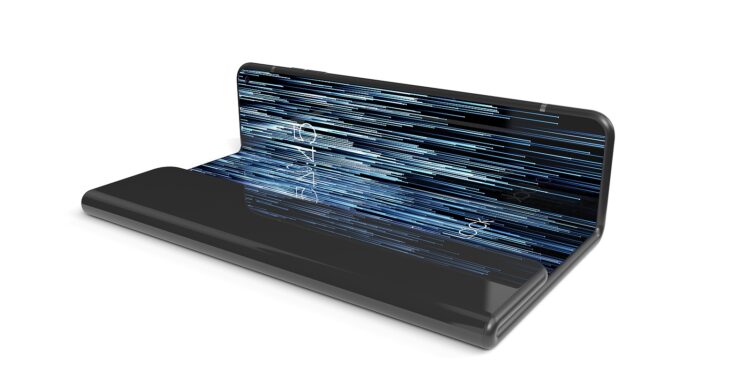Apple is working on the next revolution in the smartphone market: a foldable iPhone. While other manufacturers such as Samsung and Huawei have already launched foldable devices, Apple remains true to its reputation and focuses on perfection before making new technologies available to the masses. A recently published patent shows in detail how Apple designs foldable displays and innovative hinge structures. These developments could fundamentally change not only the iPhone but a whole range of devices.
Foldable smartphones offer users the opportunity to increase the screen area when needed without sacrificing the compactness of a handy device. They are ideal for people who want to work on the go, watch videos or use several apps at the same time. But so far, many foldable devices have struggled with problems such as a lack of durability or visible fold lines in the display. This is exactly where Apple comes in: The company wants to develop a solution that is not only technically impressive but also robust and suitable for everyday use.
Apple's approach: multi-link hinge structures
Apple is relying on sophisticated hinge mechanisms in the development of a foldable iPhone. The recently published patent describes multi-link hinge structures containing gears, belts, and moving elements. These enable precise synchronization of movements when folding and unfolding the device. A key feature is that the hinges are positioned outside the thickness of the display, allowing for a slimmer design. At the same time, special stop surfaces prevent excessive strain on the screen. The goal: maximum durability and a user experience without limitations.
Expandable Displays: More than just folding technology
In addition to foldable screens, Apple is also working on displays that can be extended or scrolled. This technology could increase the screen area when needed while the device remains compact. Such displays could be used not only in smartphones but also in other devices such as laptops, smartwatches or wearable bracelets. The patent describes how housing structures could support these movements without compromising the stability of the device. Folding, sliding or rolling mechanisms that offer users maximum flexibility are conceivable.
materials and components
Another important aspect of the development is the materials. Apple plans to use high-quality materials that are both light and robust. These materials should not only withstand the stresses of a foldable display but also provide optimal support for the hinges. The patent also places great emphasis on the integration of electronic circuits, sensors and controls. This means that the devices should not only be functional but also intuitive to use.
Potential applications beyond the iPhone
What's exciting is that Apple isn't limiting the foldable technology to just the iPhone. According to the patent, it could be used in a variety of devices, including:
- bracelets and wearables
- laptops and tablets
- glasses and VR headsets
- Embedded systems such as vehicle displays
Apple is thinking about the technology far beyond the smartphone and could thus influence numerous industries.
challenges and schedule
Despite the impressive progress, it remains unclear when Apple might launch a foldable iPhone. The company regularly files patents without revealing concrete plans for a launch. This patent also doesn't provide a timeframe, but it does suggest that Apple is laying the groundwork for a foldable iPhone. The biggest challenge remains making the technology suitable for mass production. Factors such as durability, manufacturing costs and ease of use will be crucial before such a device hits the market.
Apple's foldable iPhone: A milestone in mobile technology?
The foldable iPhone could usher in a new era in the smartphone market. With advanced hinge structures, expandable displays and a wide applicability of the technology, Apple shows that it is thinking long-term. Even if a foldable iPhone is not imminent, the patents lay the foundation for an exciting future. With this technology, Apple would have the potential to redefine not only smartphones but also other devices. It remains to be seen when the first version will be presented and how this innovation will be integrated into everyday life. However, the direction is clear: Apple remains a leading player when it comes to rethinking technology and making it accessible to users. Want some fresh accessories? Check out our Amazon Storefront where you will find a wide range of products from leading brands - ideal for HomeKit and many other applications! (Photo by kamils / Bigstockphoto)
- Apple Patent: More action buttons for iPhones and more
- iPhone: Face ID under the display is within reach
- Apple is getting closer to the foldable iPhone





